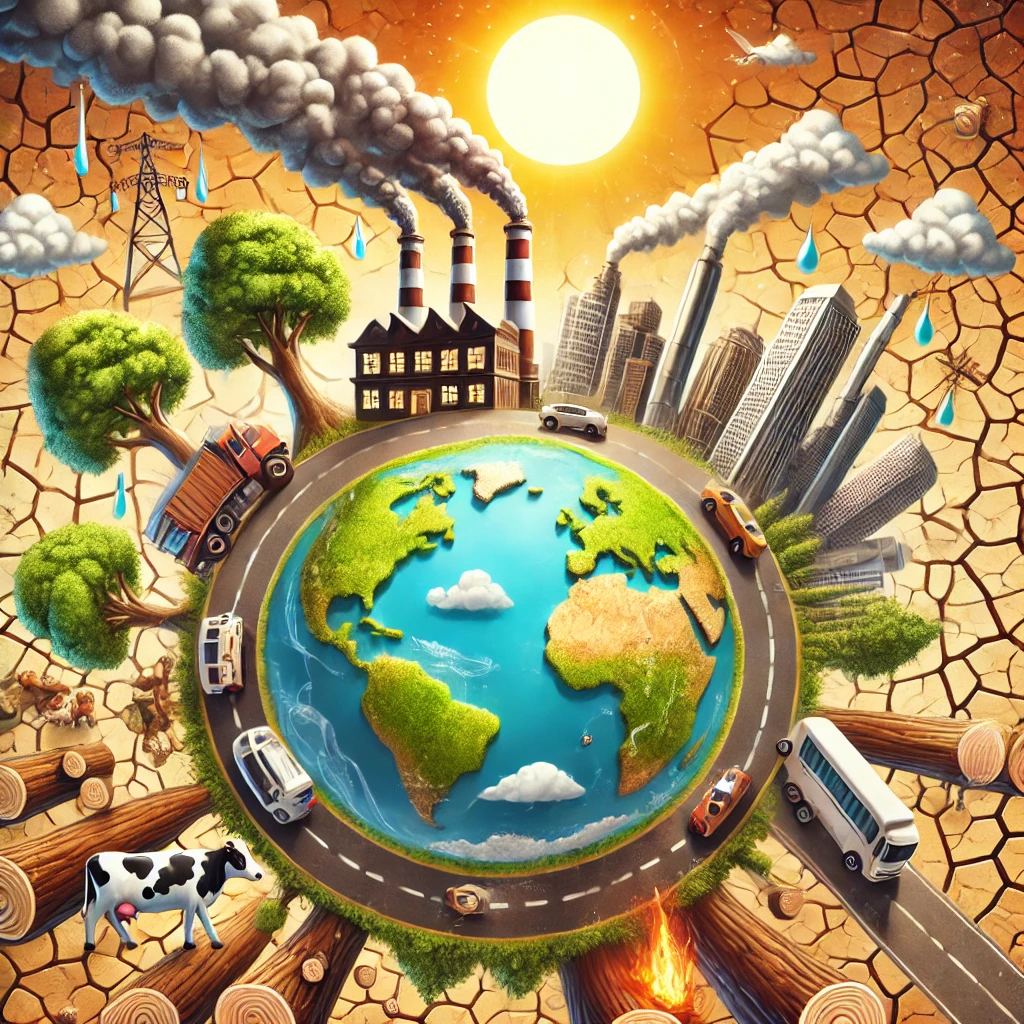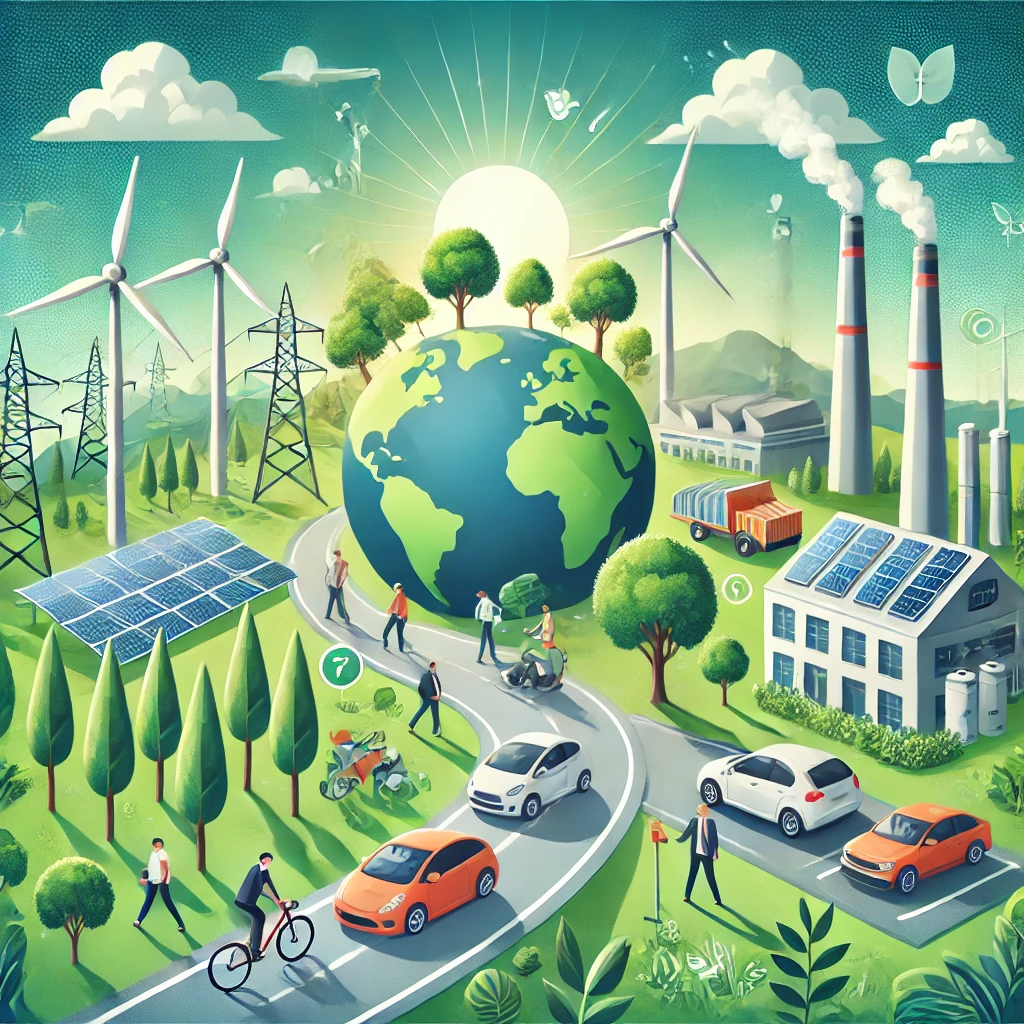Definition of global warming
Global warming refers back to the lengthy -time period growth inside the average surface temperature on Earth due to human sports and herbal factors. The fist reason is excessive accumulation of greenhouse gases including carbon dioxide (CO₂), methane (CH₄) and nitrous oxide (N₂O) in the ecosystem. These gases catch heat from the sun, main to an boom in global temperature and widespread modifications in climate patterns.
This heating effect interferes with the atmosphere, melts the polar cap, increases the sea level and hurries up excessive weather events together with storms, drought and warmth. While herbal phenomena together with volcanic eruptions and solar radiation make contributions to climate versions, human activities – particularly the combustion of fossil fuels, deforestation and industrial emissions – currently the main driver of worldwide warming.

Effects of global warming
Global warming is inflicting vast and great adjustments to the Earth’s climate device, impacting ecosystems, human societies, and economies. The effects of growing temperatures have come to be greater immoderate, affecting climate patterns, biodiversity, agriculture, and human health. Here are a number of the maximum important results of global warming:
1.Rising Global Temperatures
The Earth’s average floor temperature has been rising about approximately 1.1°C (2°F) , and the closing decade has been the warmest on document. This warming is basically due to human sports, which includes burning fossil fuels, which launch greenhouse gases into the surroundings.
2. Melting Ice Caps and Rising Sea Levels
One of the most alarming effects of worldwide warming is the melting of glaciers and polar ice caps. The Arctic and Antarctic areas are dropping ice at an remarkable price, main to rising sea ranges. As a result: Coastal cities face improved dangers of flooding and land erosion. Low-mendacity regions, which include small island countries like the Maldives and elements of Bangladesh, are susceptible to being submerged.
Freshwater assets from glaciers are diminishing, affecting consuming water availability for tens of millions of people.
3. More Frequent and Intense Extreme Weather Events
Climate change has increased excessive weather conditions, including storms, cyclones, dried and heavy rainfall.
- Hurricanes and cyclones: The hot -pairing temperature provides strong and more devastating storms, causing mass destruction in the coastal areas.
- DRY: High temperatures increase the degree of evaporation and cause severe drought to destroy agriculture and cause a lack of water.
- Wildfire: Hot and dry conditions have increased the frequency and intensity of forest fire, destroyed spacious forest areas and displaced wildlife.
4. Disruption of Ecosystems and Biodiversity Loss
Many plants and animal species struggle to adapt to changed temperatures and transfer ecosystems. Some species have extinction due to destruction of housing and converted food chains.
- Coral reef dies due to sea heating and acidification, which affects marine biodiversity.
- Polar bears and other Arctic species lose their houses like snowmelt.
- Changes in migration patterns and reproductive cycles are interrupted by natural ecosystems.
5.Impact on Agriculture and Food Security
Global Warming appreciably affects agriculture and food protection by way of causing disruptions in climate styles, leading to extreme activities like droughts, floods, and heatwaves, that can extensively lessen crop yields, affect livestock fitness, and ultimately threaten the supply and affordability of food, probably main to food insecurity in inclined areas

Causes of global warming
Burning Fossil Fuels
We depend carefully on coal, oil, and herbal gasoline for energy, transportation, and industries. When the ones fuels burn, they launch carbon dioxide (CO₂), which traps warmness inside the environment.
Deforestation
Trees soak up CO₂, however we’re reducing down forests at an alarming charge for agriculture, urbanization, and industries. Fewer bushes imply greater CO₂ remains in the air.
Industrial Activities
Factories and industries launch large quantities of greenhouse gases, particularly carbon dioxide and methane. Many production methods additionally use chemical substances that damage the environment.
Agriculture
Large-scale farming, mainly farm animals farming, produces methane (from cows and different animals) and nitrous oxide (from fertilizers). These gases make contributions notably to international warming.
Waste and Landfills
When organic waste decomposes in landfills, it releases methane, a greenhouse gasoline tons more potent than CO₂.
Overpopulation
More people manner more power intake, greater deforestation, and greater waste, all adding to climate trade.
Pollution from Transportation
Cars, planes, and ships burn fossil fuels, liberating CO₂ and different pollutants. The growing quantity of cars on the road makes this a main contributor.
Excessive Energy Use
Our heavy dependence on power, especially from non-renewable assets, increases CO₂ emissions. Leaving lighting on, overusing air conditioners, and losing electricity all add up.

Solutions to Global Warming: How We Can Stop It
Switch to Renewable Energy
Transition from fossil fuels to easy power assets like solar, wind, and hydroelectric strength to reduce carbon emissions. Encourage the usage of sun panels and authorities investments in green electricity.
Increase Energy Efficiency
Reduce power waste via using LED bulbs, energy-efficient home equipment, and higher home insulation. Turn off unused electronics and adopt smart grids for optimized power intake.
Reduce waste and promote recycling
recycling paper, plastic, glass and metal to reduce landfill emissions. Compost food waste and prohibition on disposable plastic to cut pollution.
Improve public transport and use green vehicles
Reduce vehicle emissions by investing in electric cars, bicycles, interconnection and improving public transport. Governments should promote pure fuel options and better infrastructure for electricity dynamics.
Support climate policy and laws
encourage governments to implement carbon tax, pollution control and subsidies for renewable energy. Support international climate agreements such as Paris agreements.
Increase awareness and educate people
educate communities on climate change and stability through schools, social media and local initiatives. Encourage companies to adopt environmentally friendly politics.
Reduce over
perception and support sustainable brands manufactured, buy environmentally friendly and recycled products. Avoid fast fashion and excessive plastic packaging to reduce industrial waste.
Invest in green technologies and carbon capture
support research to reduce car emissions in storing carbon capture (CCS), electric battery and green hydrogen. Use AI and smart networks to optimize energy consumption.
1. What is global warming?
Global warming refers back to the lengthy -time period growth inside the average surface temperature on Earth due to human sports and herbal factors. The fist reason is excessive accumulation of greenhouse gases including carbon dioxide (CO₂), methane (CH₄) and nitrous oxide (N₂O) in the ecosystem. These gases catch heat from the sun, main to an boom in global temperature and widespread modifications in climate patterns.
2. What are the main causes of global warming?
The number one reasons of worldwide warming consist of:
1. Burning fossil fuels (coal, oil, natural fuel)
2. Deforestation (reducing tree cover that absorbs CO₂)
3. Industrial sports (emitting greenhouse gases)
4. Transportation pollutants (motors burning fossil fuels)
5. Excessive strength use (wasteful intake of non-renewable strength)
3. What are some solutions to global warming?
Reduce waste & recycle (cut landfill emissions) Use public transport & electric vehicles Support climate policies & laws (carbon tax, clean energy subsidies) Raise awareness & educate people Invest in green technology & carbon capture.
4. How can individuals help reduce global warming?
Use less energy by turning off unused electronics Recycle & reduce waste Adopt a plant-based diet to cut agricultural emissions.
